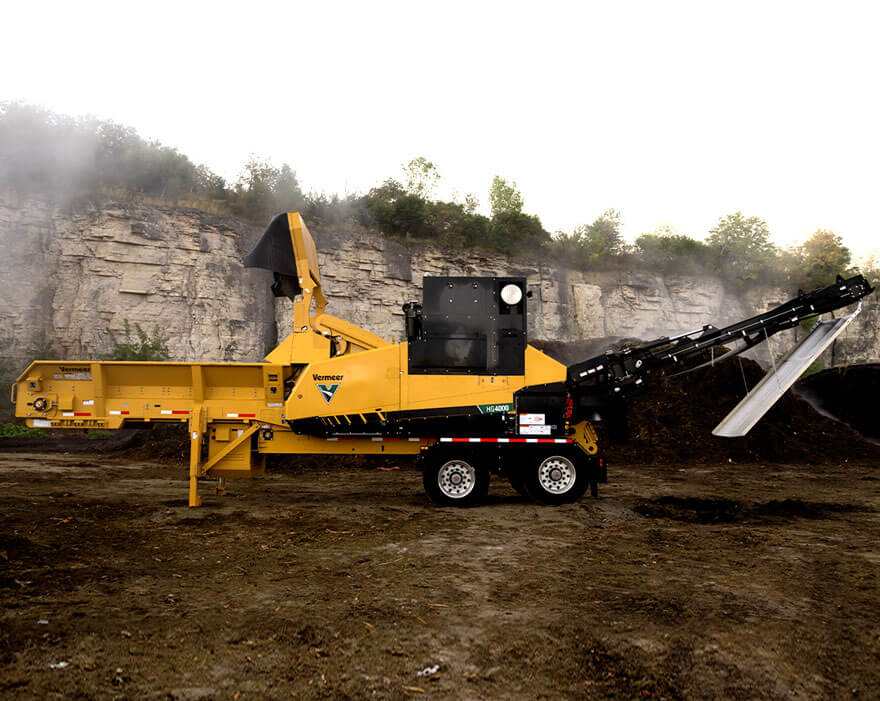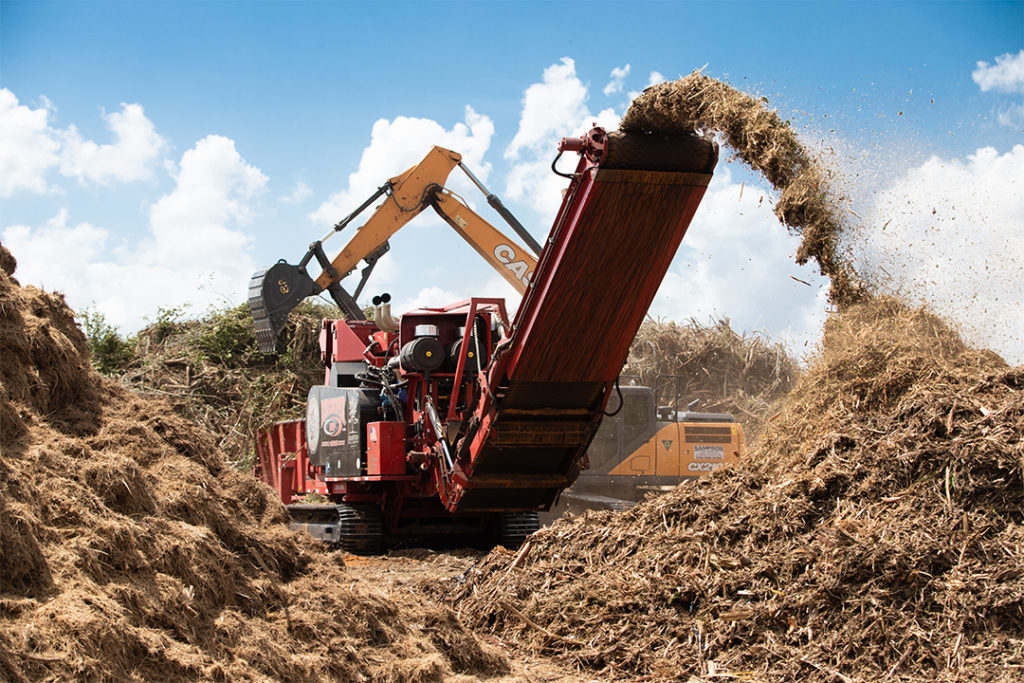Discover the current Developments in Wood Processing with Advanced Wood Grinders
Discover the current Developments in Wood Processing with Advanced Wood Grinders
Blog Article
Enhance Recycling Initiatives With Powerful Wood Grinders: the Trick to Effective Waste Administration
Effective waste monitoring is a pressing concern in today's culture, and enhancing reusing efforts is a crucial facet of sustainable waste decrease (wood grinders). One powerful device that plays a considerable role in this undertaking is the wood mill. These devices supply a way to effectively process timber waste, transforming it into important sources. However, the advantages of timber mills expand beyond recycling efficiency, as they likewise add to ecological preservation and price savings. To completely recognize the potential of these powerful makers in waste management, it is important to explore their importance, functions, and ideal practices for including them into reusing programs. By doing so, we can reveal the secret to efficient waste management and its positive influence on our environment and neighborhoods.
The Importance of Wood Grinders in Waste Management
Wood mills play an essential function in waste administration by successfully reducing the volume of wood waste and promoting its correct disposal. Timber waste, such as pallets, logs, and branches, can take up valuable room in land fills and add to ecological contamination if not managed properly. Timber mills are particularly developed to break down large pieces of timber right into smaller sized, a lot more workable sizes, making it simpler to get rid of and move of the waste.
Among the vital advantages of wood grinders is their ability to reduce the quantity of wood waste. By damaging down big items of wood into smaller sized bits, wood mills can dramatically reduce the amount of area required for storage and disposal. This not just aids to maximize land usage yet likewise lowers transport expenses connected with transporting large wood waste.
Additionally, wood grinders promote the correct disposal of timber waste. The refined wood waste can be effectively recycled or repurposed for various applications such as compost, biomass gas, or animal bedding. By changing wood waste right into useful sources, wood mills contribute to the circular economy and advertise lasting waste monitoring methods.
How Timber Grinders Improve Reusing Performance
Wood grinders play a critical role in enhancing reusing performance by changing cumbersome timber waste into important resources. These effective equipments are developed to successfully break down large pieces of wood into smaller, much more workable sizes, permitting simpler processing and recycling. By lowering the dimension of the wood waste, timber grinders allow reliable transportation and storage, inevitably conserving time, area, and sources.
Among the main benefits of wood mills is their capacity to transform wood waste right into valuable products such as compost, compost, or biomass fuel. With the grinding procedure, the timber waste is transformed into a fine, uniform product that can be utilized in various applications. Compost can be made use of for landscape design purposes, garden compost can improve dirt and promote plant growth, and biomass fuel can be used to create warmth and electricity.
Additionally, wood grinders aid to reduce the ecological influence of timber waste by diverting it from land fills. By recycling wood waste, it decreases the demand for new resources, preserves energy, and decreases greenhouse gas exhausts associated with the manufacturing and disposal of timber products.

Benefits of Using Powerful Wood Grinders for Waste Decrease
Making use of effective timber grinders for waste decrease supplies countless advantages in terms of effectiveness and sustainability. These devices are created to properly and successfully grind timber waste right into smaller sized, more manageable pieces, decreasing the volume of waste generated.
Furthermore, effective wood mills add to the sustainability of waste management initiatives. The ground timber waste can be repurposed and utilized in numerous industries, such as biomass power production, pet bedding, or compost manufacturing. This produces a circular economy where waste products are recycled and recycled, decreasing the demand for new raw products and minimizing ecological influence.
Moreover, using wood grinders for waste decrease can additionally enhance office safety. By grinding wood waste, the danger of accidental injuries from managing huge and bulky pieces of waste is significantly minimized. The mills are geared up with safety and security attributes to make sure the defense of drivers and prevent crashes.
Key Attributes to Consider When Selecting a Wood Grinder

One important function to take into consideration is the power of the mill. Greater horsepower permits the machine to procedure bigger volumes of timber waste swiftly and efficiently. In addition, an effective motor makes sure that the grinder can take care of tough products and preserve regular efficiency over prolonged durations.
Another trick feature to try to find is the size and design of the grinding chamber. A bigger chamber allows for more wood waste to be processed at the same time, reducing downtime for emptying and enhancing general efficiency. A properly designed chamber with purposefully placed cutting mechanisms guarantees uniform grinding and reduces the risk of jams or obstructions.
Effective waste management requires a timber mill with robust cutting mechanisms. Look for mills furnished with sharp, resilient blades or hammers that can efficiently shred and process the timber waste. Furthermore, some grinders offer flexible settings, allowing drivers to personalize the size and consistency of the result product.
Relieve of maintenance is additionally a critical factor to consider. Try to find grinders that provide easy accessibility to the grinding chamber and reducing systems, enabling quick and convenient cleansing and blade replacement. This guarantees minimal downtime and optimizes the my explanation mill's general life-span.
Finest Practices for Incorporating Timber Grinders in Recycling Programs
In order to properly integrate wood grinders into recycling programs, it is vital to execute finest techniques that optimize their use and maximize waste reduction initiatives. One crucial finest practice click to read more is to properly keep and service the timber mills often. This consists of regular assessments and cleansing to make certain that the equipment is in optimum problem and operating successfully. By maintaining the grinders properly maintained, the threat of break downs and downtime is decreased, permitting continuous recycling procedures.
An additional ideal technique is to train recycling program personnel on the appropriate procedure and maintenance of the wood mills. This includes enlightening them on safety and security protocols, such as wearing ideal protective gear and complying with correct operating procedures. Additionally, staff ought to be educated on exactly how to identify and quickly address any issues that might emerge throughout the grinding procedure.
It is likewise crucial to establish a detailed waste administration plan that incorporates making use of timber mills. This includes identifying the kinds and amounts of wood waste that will be refined, along with developing effective workflows and timetables for grinding procedures. By very carefully preparing and organizing the recycling program around the usage of timber mills, the overall waste decrease initiatives can be made best use of.
Last but not least, it is vital to consistently monitor and evaluate the efficiency of the timber mills in the recycling program. This can be done by tracking key metrics such as the quantity of timber waste processed, the effectiveness of the grinding procedure, and the overall decrease in waste volume. By continuously keeping track of and examining these metrics, any type of required adjustments or renovations can be recognized and implemented to further have a peek at this site maximize the wood grinding procedure and boost the overall efficiency of the recycling program.
Final Thought
In verdict, powerful wood grinders play a vital duty in boosting reusing efforts and effective waste management. By enhancing recycling effectiveness and minimizing waste, timber mills add to an extra environmentally friendly and sustainable approach to squander disposal.
Wood grinders play a critical function in waste monitoring by efficiently minimizing the quantity of wood waste and facilitating its proper disposal.Additionally, wood mills promote the correct disposal of timber waste. By changing timber waste into important resources, timber mills add to the circular economic climate and promote sustainable waste management techniques.
Timber grinders play an essential role in boosting reusing effectiveness by transforming bulky timber waste right into useful resources (wood grinders). By decreasing the dimension of the timber waste, timber grinders enable efficient transport and storage, ultimately conserving time, area, and resources
Report this page